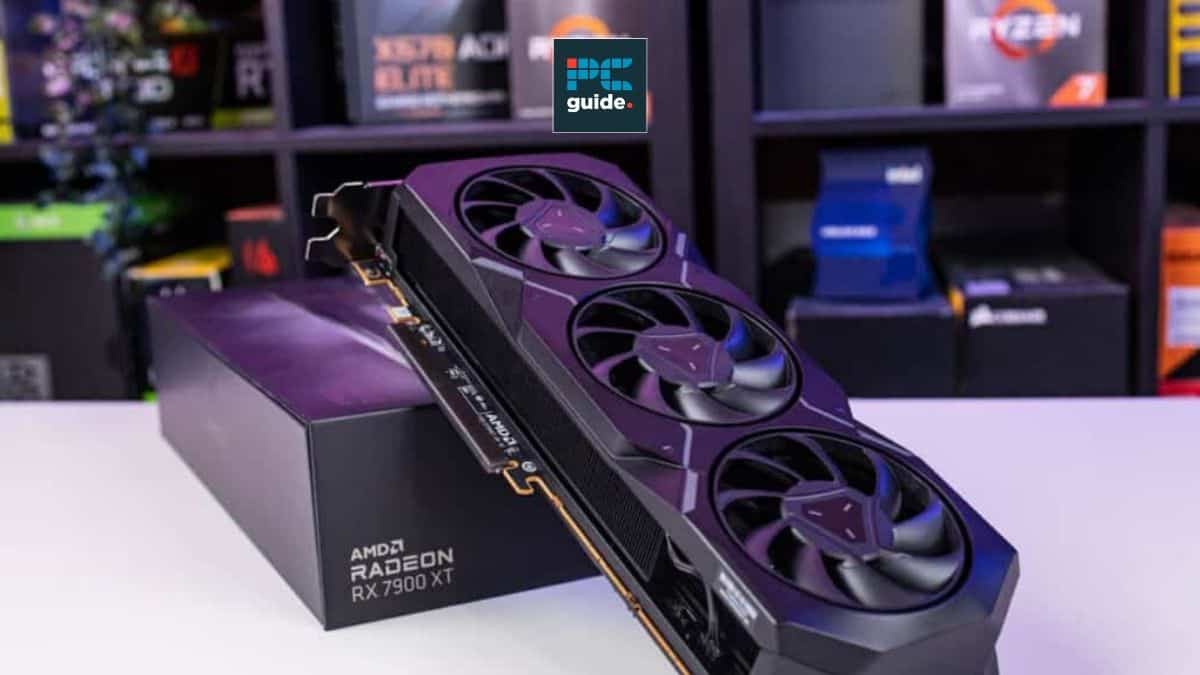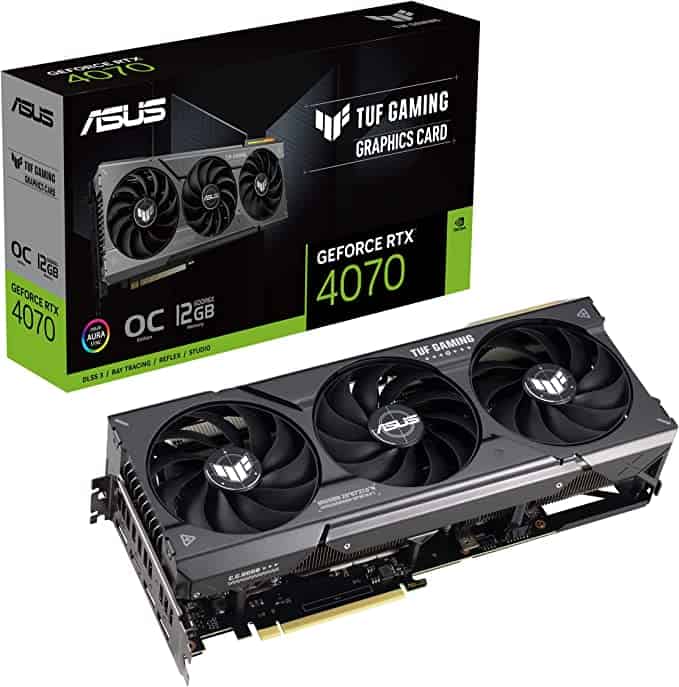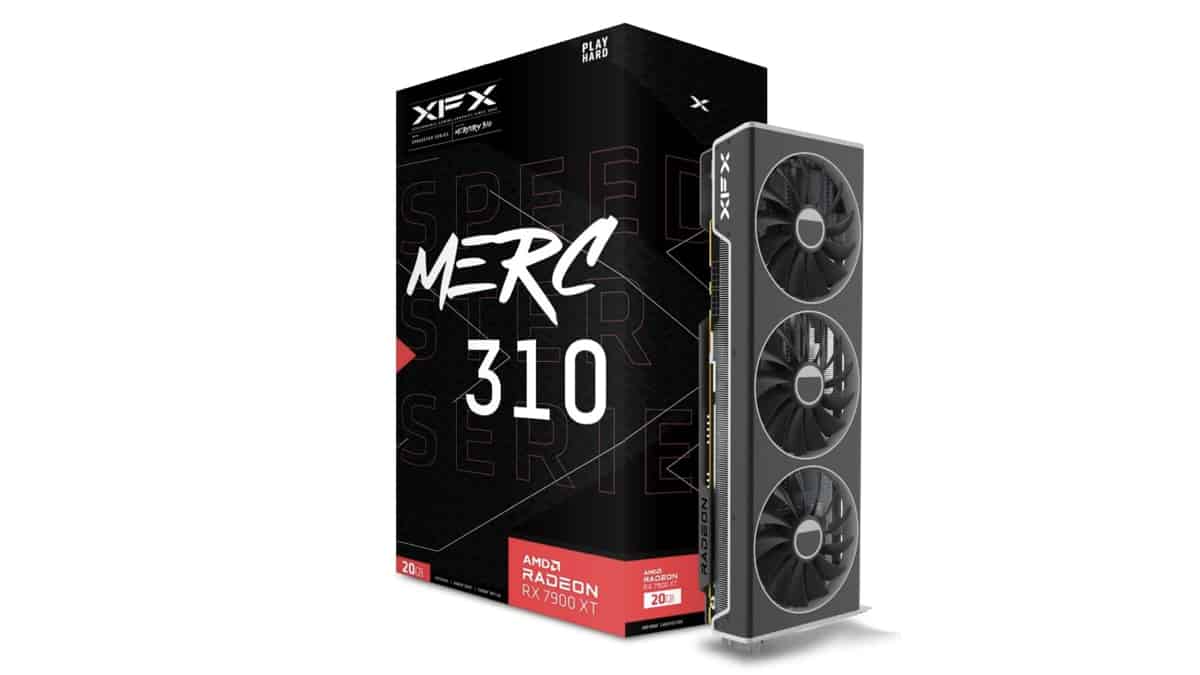Nvidia RTX 4070 vs AMD RX 7900 XT – Who wins?

Table of Contents
If you’re in the market for a new GPU and find yourself caught between these two contenders, you’re in the right place. In this article, we’ll delve into the nitty-gritty details of RTX 4070 vs RX 7900 XT, comparing their specs, performance, benchmarks, and even price. We aim to provide you with a comprehensive understanding of what each GPU brings to the table, so you can make an informed decision about which one is the best fit for your gaming rig.
RTX 4070 vs RX 7900 XT – Specs
When it comes to comparing the specs of the RTX 4070 and RX 7900 XT, there are a few key differences to consider. Both cards are built using the TSMC 5nm process technology, which means they share a similar foundation. However, the similarities start to diverge when we examine their architectures, core counts, and memory configurations.
The RTX 4070 is powered by NVIDIA‘s AD104 architecture and features 5,888 CUDA cores. On the other hand, the RX 7900 XT utilizes AMD’s Navi 31 architecture and comes with 5,376 stream processors. While the RTX 4070 has slightly more cores, the real-world performance difference will depend on various factors, including clock speeds and software optimizations.
| Specs | Nvidia RTX 4070 | AMD Radeon RX 7900 XT |
|---|---|---|
| Architecture | AD104 | Navi 31 |
| CUDA cores | 5888 | 5376 |
| VRAM | 12 GB GDDR6X | 20 GB GDDR6 |
| Memory Interface Width | 192 bit | 320-bit |
| Process Technology | TSMC 5nm process | TSMC 5nm Process |
| Base clock speed | 1920 MHz | 1500 MHz |
| Boost Clock speed | 2475 MHz | 2394 MHz |
| Graphics Card Power (TDP) | 200W | 300W |
| Memory bandwidth | 504.2 GB/s | 800.0 GB/s |
When it comes to memory, the RTX 4070 sports 12GB of GDDR6X VRAM, while the RX 7900 XT boasts a whopping 20GB of GDDR6 memory. Although the RTX 4070 has faster GDDR6X memory, the RX 7900 XT benefits from a wider 320-bit memory interface, which allows for a higher memory bandwidth of 800.0 GB/s compared to the RTX 4070’s 504.2 GB/s. This can translate into better performance in games and applications that demand high memory bandwidth.
The base and boost clock speeds of these cards are another area of distinction. The RTX 4070 has a base clock speed of 1,920 MHz and a boost clock speed of 2,475 MHz. In comparison, the RX 7900 XT has a lower base clock speed of 1,500 MHz but a competitive boost clock speed of 2,394 MHz.
Lastly, let’s talk about power consumption. The RTX 4070 has a graphics card power (TDP) of 200W, while the RX 7900 XT comes in at a notably higher 300W. This difference could be a determining factor if you’re concerned about power efficiency and heat generation in your system.

RTX 4070 vs RX 7900 XT – Performance and benchmarks
When comparing the performance of the RTX 4070 and RX 7900 XT, it’s crucial to consider how each card handles various gaming scenarios and workloads. Although their specs may give us an idea of their capabilities, it’s the real-world performance that ultimately matters to gamers and content creators.
In general, both cards perform admirably in 1440p gaming, delivering smooth frame rates and excellent visuals. The RTX 4070 tends to have a slight edge in many games due to its higher CUDA core count and faster GDDR6X memory. However, the RX 7900 XT’s higher memory bandwidth and larger VRAM capacity can help it excel in certain games or situations that require high memory bandwidth, such as high-resolution textures or large open-world environments.
Regarding 4K gaming, the performance gap between the two cards may become more noticeable. The RTX 4070 can handle 4K gaming at medium-to-high settings in most titles. Still, the RX 7900 XT’s additional VRAM and memory bandwidth could give it an advantage in more demanding games or those with high-resolution textures.
Ray-tracing performance is another important factor to consider. NVIDIA’s RTX 4070 supports hardware-accelerated ray tracing and comes with DLSS (Deep Learning Super Sampling) technology, which can significantly improve performance in ray-traced games. AMD’s RX 7900 XT also supports ray tracing, but it relies on FidelityFX Super Resolution (FSR) to boost performance. While both technologies aim to improve image quality and frame rates, DLSS tends to have an edge in visual fidelity and performance, giving the RTX 4070 a potential advantage in ray-traced titles.
In terms of productivity and content creation workloads, both cards perform well in applications such as video editing, 3D rendering, and AI-based tasks. However, the choice between the RTX 4070 and RX 7900 XT may come down to the specific software you use and whether it’s optimized for NVIDIA or AMD GPUs. If you are interested in seeing the benchmark comparison results, be sure to check the table below which goes into the various games and their performance at 1440p and 4K. Each set of test results was conducted in our Nvidia RTX 4070 review and AMD RX 7900 XT review which are also available now.
| Game / Title | Nvidia RTX 4070 1440p / 4K | AMD Radeon RX 7900 XT 1440p / 4K |
|---|---|---|
| CS2 / CS:GO | 214 FPS / 103 FPS | 555 FPS / 313 FPS |
| Cyberpunk 2077 | 74 FPS / 27 FPS | 119 FPS / 62 FPS |
| Assassin’s Creed Valhalla | N/A | 145 FPS / 90 FPS |
| Fortnite | N/A | 79 FPS / 42 FPS |
RTX 4070 vs RX 7900 XT – Price
When it comes to price and MSRP, the RTX 4070 and RX 7900 XT present different options for gamers and creators. The RTX 4070 is priced at $599.99, making it a more budget-friendly option for those looking for powerful performance without breaking the bank. The RX 7900 XT, on the other hand, comes with a heftier price tag due to its larger VRAM capacity and other features, often retailing for around $999 or more.
It’s important to note that market fluctuations, availability, and demand can impact the actual selling prices of both cards. Additionally, third-party models with custom cooling solutions or factory overclocks can also affect pricing. Make sure to compare prices from various retailers and watch out for discounts or bundles that may offer additional value.
When deciding between the RTX 4070 and RX 7900 XT, consider the price difference and whether the additional cost for the RX 7900 XT is justified by the performance boost and extra features it provides. If you’re on a tighter budget or primarily playing games without heavy VRAM requirements, the RTX 4070 may be a more cost-effective choice. However, if you need the extra VRAM and higher memory bandwidth for specific tasks or want to future-proof your system, the RX 7900 XT might be worth the investment.
Ways to improve your GPU performance
While a GPU can greatly improve your gaming performance and the overall abilities of your laptop or desktop, there are several other ways to do so. By pairing your GPU with a compatible CPU, motherboard, or gaming monitor, users are able to bump their performance up another notch. Make sure you investigate which of these extra components works well with your GPU. It is certainly worth your time.
Is the 7900 XT better than the RTX 4080?
Average metrics prove that the RTX 4080 is around 13.6% better than the RX 7900 XT, but the latter card is a bit more powerful in 1080p gaming metrics. So, it comes down to budget and what you’re looking for, whether that’s 1080p or 1440p gaming.
Final thoughts
In summary, both the RTX 4070 and RX 7900 XT are powerful graphics cards capable of delivering fantastic gaming experiences and productivity performance. Each card has its strengths, with the RTX 4070 excelling in ray tracing and DLSS-supported games, while the RX 7900 XT shines with its larger VRAM capacity and higher memory bandwidth.
Ultimately, the choice between these two cards will come down to your personal preferences, budget, and specific use case. If you prioritize ray tracing and want the benefits of DLSS, the RTX 4070 will be the better choice for you. On the other hand, if you’re looking for a card with more VRAM and higher memory bandwidth for demanding games or content creation tasks, the RX 7900 XT is the way to go.


